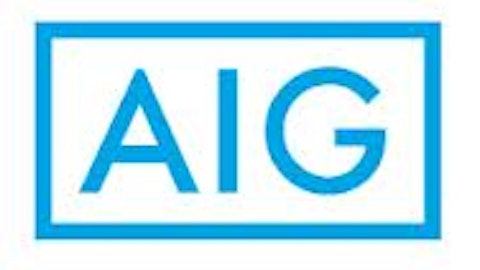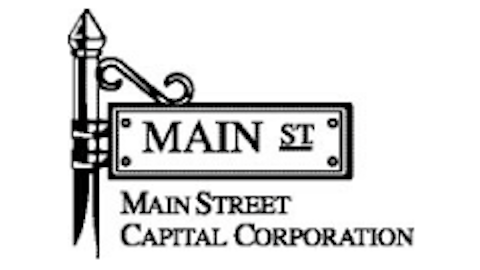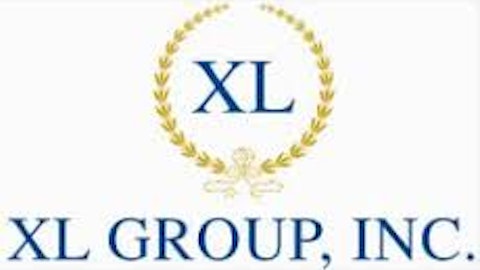We shouldn’t be surprised that high-yield stocks are popular in a low interest rate environment. When the best CDs offer little more than 1% for five-year maturities, 3% yielding blue chips look exemplary.
Stocks yielding 10% or more look like the opportunity of a lifetime.
But what are you giving up by chasing high-yield stocks? Are high-yield investors accepting too much risk just to get a taste of high dividend yields?
Comparing BDCs and insurance companies
Business development companies and insurance stocks couldn’t be more different. BDCs invest in speculative debt and equity investments in smaller, non-public companies. Their unique framework allows for huge dividends to the tune of 10% or more per year by using leverage in their mostly-debt portfolios.
Insurance portfolio managers prefer investment-grade debt and equity investments to back their book value. Insurance companies are also leveraged, as they rely on their float (premiums received that have not yet been paid out) to fund their investment portfolios. Unlike BDCs, your typical insurance company pays out much less than 90% of their income. A payout ratio of 25%-30% is common.
As different as these two business models may be, I want to explore the idea that they’re really quite similar — and that BDC investors may be accepting too much risk in their portfolios in exchange for higher dividends.
Top BDCs vs. a top insurance company
Let’s take a look into the investment portfolios of top BDCs to compare them to a top insurance company. I want to see how BDCs like Ares Capital Corporation (NASDAQ:ARCC) and Apollo Investment Corp. (NASDAQ:AINV) invest compared to a property and casualty insurance company like The Chubb Corporation (NYSE:CB).
Mix of debt and equity
First, we’ll assess from the top down, the mix of debt and equity investments on these three companies’ balance sheets.
Ares Capital Corporation (NASDAQ:ARCC) splits its portfolio 90-10 in favor of debt over equity investments. Apollo Investment invests its portfolio at a 94-6 split, also in favor of debt investments. The Chubb Corporation (NYSE:CB) holds 91% of its portfolio in debt and 4% in equity, with 5% in “other.” (Other investments include derivatives, swaps, and other hedging positions.)

This top-down look reveals that there is no substantial asset allocation difference between the BDCs and a property & casualty insurance company insofar as debt vs. equity.
So we should dig deeper. Let’s break down the portfolios for each company.
The Chubb Corporation (NYSE:CB)’s $38 billion debt portfolio is invested in investment grade securities. Only 0.55% of its portfolio is invested in non-investment grade securities — MBS securities that have since lost their luster. Its portfolio is made up of half tax exempt bonds, with the other half made up of U.S. Government, corporate, foreign government, and residential and commercial MBS securities. All of these investments are A-rated or better.
Apollo Investment Corp. (NASDAQ:AINV) doesn’t have an investment grade security in its portfolio. The company invests in non-public, non-rated securities yielding an average of 11.9% as of the latest annual report.
Ares Capital Corporation (NASDAQ:ARCC) doesn’t hold investment grade issues either, as evidenced by its high-yield portfolio spewing 11.1% in the most recent quarter.

When it comes to the quality of the underlying portfolio, insurance companies offer significantly more safety. A-rated debt from the largest sovereign governments and blue chip companies is substantially safer than non-rated, junk debt from companies too small to sell debt directly to Wall Street.
So why would investors favor BDCs over geographically-diversified property and casualty insurers? I think it has all to do with the dividend, an unfortunate reality.
Dividends vs. capital appreciation
BDCs and insurance companies are in similar businesses. They both invest funds to generate a profit, and reward shareholders with capital appreciation and dividends. They also tend to trade close to their book values, since the value of any investment-related business is related to the value of the underlying portfolio.
Both Ares Capital Corporation (NASDAQ:ARCC) and Apollo Investment trade at book value. The Chubb Corporation (NYSE:CB) trades at 1.4 times book value, due to the fact that some of its profits are obtained through insurance underwriting, not just the investment portfolio.
Using trailing 12 month ROE and book value multiples allows us to see what kind of long-term return one could reasonably expect from each investment. Chubb managed a 10% return on equity, which when divided against its price-to-book ratio of 1.4, reveals an effective return to shareholders of 7% per year, assuming zero growth in underwriting. (Chubb’s 10-year average revenue growth is a respectable 4% per year.)
A BDC’s dividend yield is a good measure of expected returns. As both BDCs in this article yield just under 10% per year, investors should expect returns of 10% per year as all earned income is paid out as a distribution to investors. In a taxed portfolio, BDCs after-tax returns are virtually the same as the after-tax returns from a top insurance company, since taxes are passed through the RIC format of a BDC and taxed at income tax rates for individuals.
This leads me to ask a very important question: is the promise of a high dividend payout ratio truly worth taking more risk? The returns from a BDC and The Chubb Corporation (NYSE:CB) adjusted for taxes are substantially similar, but the risk profile (junk debt vs. A-rated government debt) couldn’t be more different.
Investors who can afford to forgo current income would be better off to look through property and casualty insurance companies trading at very low multiples of 10-12 times earnings. While dividends won’t match the high dividends from BDCs, investors accept far less risk in their portfolio. If you don’t absolutely need a high yielding asset, then a lower payout insurance company looks much better on a risk-adjusted basis.
Jordan Wathen has no position in any stocks mentioned. The Motley Fool has no position in any of the stocks mentioned. Jordan is a member of The Motley Fool Blog Network — entries represent the personal opinion of the blogger and are not formally edited.
The article High Dividend Yields Come at a Price originally appeared on Fool.com and is written by Jordan Wathen.
Copyright © 1995 – 2013 The Motley Fool, LLC. All rights reserved. The Motley Fool has a disclosure policy.





